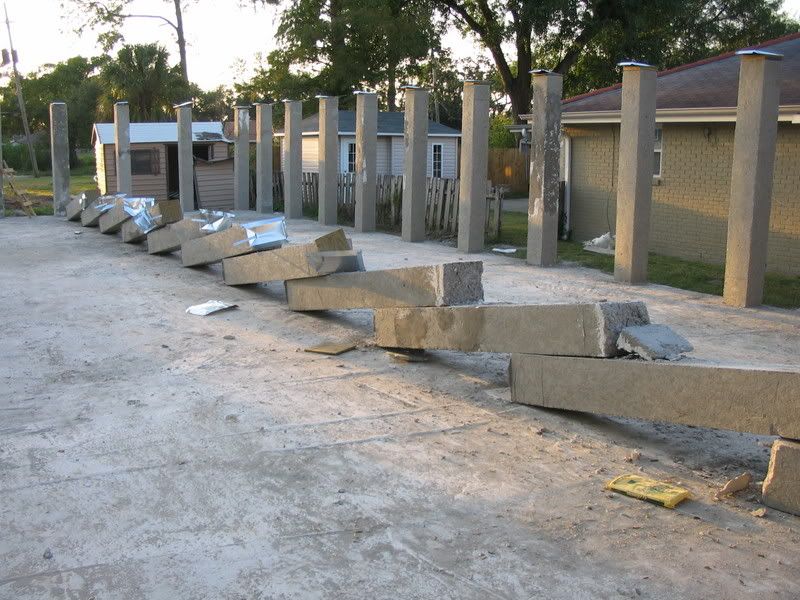The lights are especially significant in this flood-damaged part of New Orleans. I’ve blogged before about the symbolism of lights this time of year. I’ve written about how dark the streets are when so many houses are mere husks.
I walked over to my neighbor K.C.’s trailer next to the London Avenue Canal a few nights ago and I could not help but admire the scattered hearty souls who decorated for this holiday season. The word that leapt to mind was faith.

That’s not a word you’ll often hear coming from me. Having rejected religious creeds some time ago, you won’t hear me talking about faith in the supernatural.
But faith here is of a different breed. Faith here is not in the unobservable or the unproven. Faith here is in the power of community and humanity. These pioneers, having sunk I am sure a considerable sum of money and personal effort, returned to this damaged neighborhood.
They gutted and rebuilt in some cases or demolished and constructed entirely from scratch in others. They staked their time and money to some fairly barren streetscapes, where stray cats just might outnumber the residents and where only the moon illuminates the darkened windows and agape doors.

Where are their neighbors now? What will the city, the state, the nation do to assure that these first-to-return homeowners will not be the last? What promises were made to encourage their courageousness?
The answer, of course, is none of that matters. Because these pioneers are not here for such facile reasons.
They are here simply on faith.
They believe that the city will recover. They believe this neighborhood will thrive. They know, as fervently as anyone can know, their neighbors or someone just as good will repopulate these houses and breathe life into the Vista Park neighborhood again.
They have faith in all of these things. So much so, they have decorated for Christmas in anticipation of the homecoming.
And who can mock such loyalty and love? As a newspaper editor once wrote to a child named Virginia, who can doubt that such faith in the goodness of mankind will not be rewarded in full? Who would dare discourage faith in the virtue of one’s home, one’s city, one’s nation?
And yet, there are those who do just so. New Orleans lacks many things since Hurricane Katrina spilled misery into our city, and there sometimes seems to be an endless parade of crude newspaper editors and mean-spirited bloggers all too eager to point these shortcomings out.
Yes, we struggle on. We want for so many things in New Orleans, but not the frivolous fare hawked this time of year—not flat-screen TVs, diamond jewelry and xbox gadgetry. We are still trying to get back the basic things that make a community viable, livable and prosperous. We struggle for schools, for hospitals, for basic, decent housing for the poor and elderly.
But here is something we have in abundance: faith.
And it seems to me that as long as we have faith—in ourselves, our abilities, our shared purpose and community—the rest will not be out of our reach for too long.












